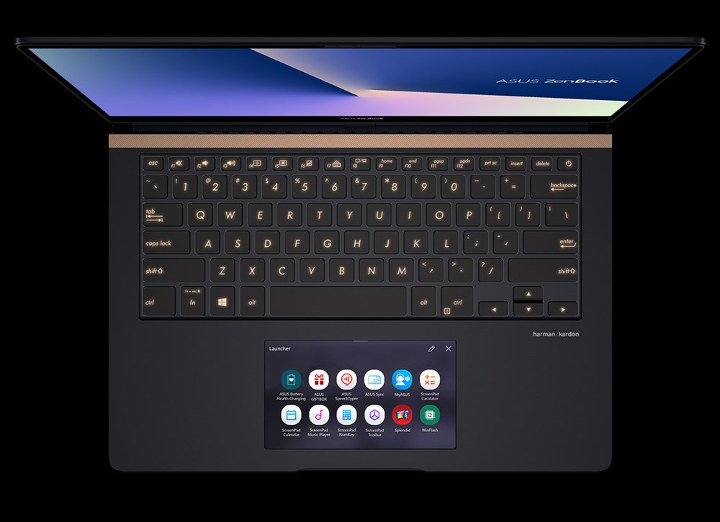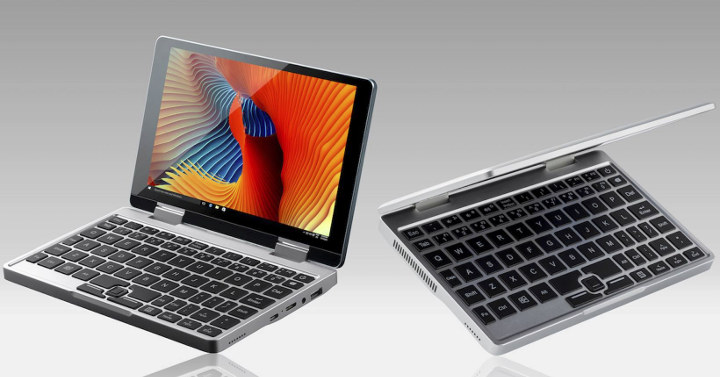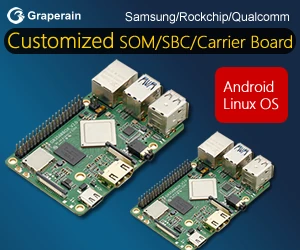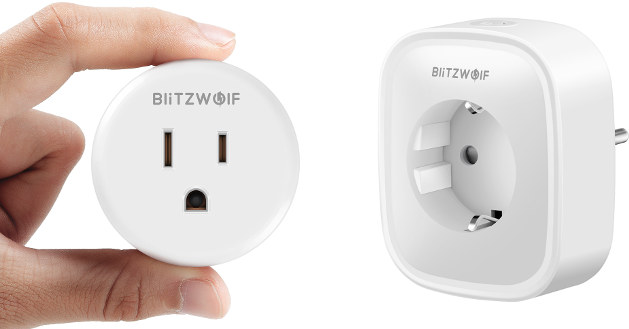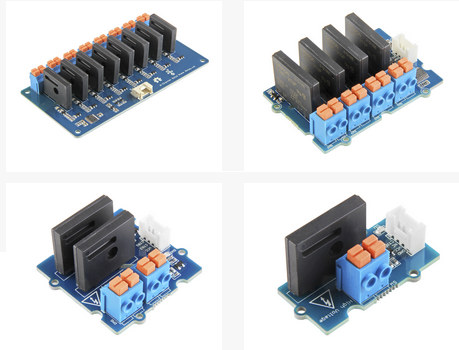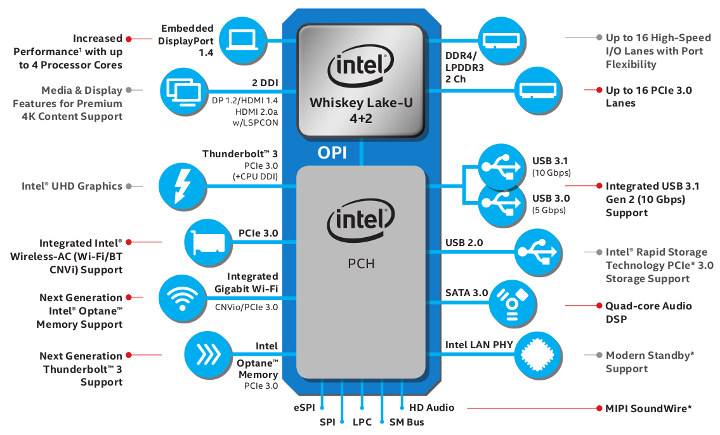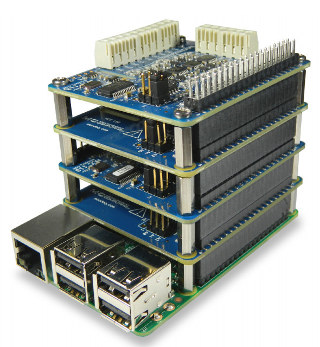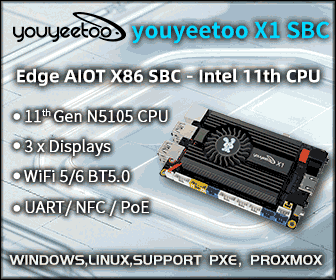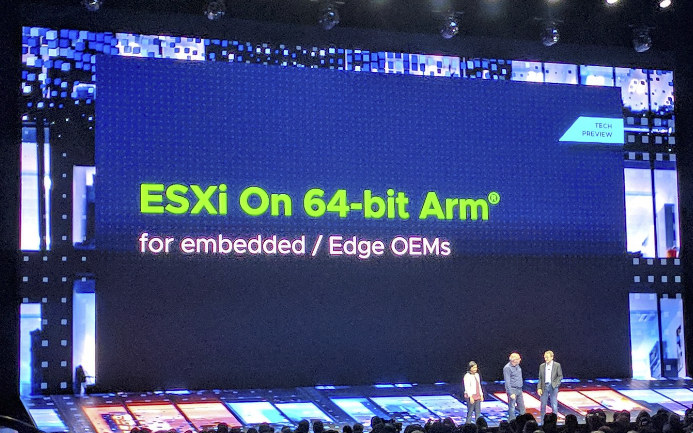Touchpads is a feature found in most laptops, but AFAIK there’s not been much innovation recently apart from maybe support for multitouch and gestures. But I’ve just found out ASUS started to showcase laptops without touchpad a few months ago, instead integrating what the company calls a ScreenPad, a 5.5″ touchscreen display placed at the location where you’d normally expect a touchpad. The company’s latest (and second) laptop with a ScreenPad is Asus ZenBook Pro 14 UX480FD, which comes with a 14″ display, processor up to an Intel Core i7-8565U Whiskey Lake-U processor, up to 16GB DDR4 RAM, and up to 1TB PCIe SSD storage, as well as an NVIDIA GeForce GTX 1050 Max-Q graphics, 802.11ac WiFi, Bluetooth 5.0, and more. You can visit the product page for the full specs, as I’ll focus a bit more on the ScreenPad in this post. The ScreenPad in this laptop is a […]
TopJoy Falcon Mini Laptop Features an Intel Pentium N5000 Processor, an 8″ Display (Crowdfunding)
UMPC’s (Ultra Mobile PC) or mini laptops have made a sort of comeback in recent years with products such as GPD Pocket 2 mini laptop or One Mix Yoga pocket laptop. Those products come with a low power Intel processor running Windows 10, and a 7″ display, and compact keyboard. TopJoy Falcon is another upcoming mini laptop that should deliver performance right between the Atom x5-Z8350 processor found in One Mix Yoga and the more powerful Core m3-7y30 powering the GPD device with an Intel Pentium Silver N5000 Gemini Lake processor. The device looks similar to its competitor, except it also comes with a larger 8″ display, and as a consequence a slightly larger keyboard. TopJoy Falcon specifications: SoC – Intel Pentium Silver N5000 quad core “Gemini Lake” processor @ 1.10 / 2.7 GHz (Turbo) with Intel UHD graphics 605; 6W TDP System Memory – 8GB RAM Storage – 256GB […]
BlitzWolf Inexpensive & Compact EU & US Smart Sockets Work with ESPurna & Sonoff-Tasmota Open Source Firmware
When I first started to look into WiFi smart sockets a few years, there were some fairly compact models such as the Linux based Kankun KK-SP3 or ESP8266 based Konke Mini K sockets. In recent years, more wireless smart sockets have come to market, but fewer companies have made compact models, and for example Sonoff S26 or Sonoff S31 smart sockets are not exactly small. But this morning I got contacted by a company called BlitzWolf that sells various accessories including low cost and compact smart sockets for the US and EU markets. It could prove to be interesting, so let’s check out the specifications: BlitzWolf BW-SHP1 US Smart Socket Rated Voltage – 110-240V @ 50-60 Hz Rated Current – 10A (Max) Max Total Power Output – 2000W Dimensions – 4.5 cm ∅ (VO fireproof material) Temperature Range – -10 to +60°C BlitzWolf BW-SHP2 EU Smart Socket Rated Voltage – […]
Seeed Studio Introduces 1 to 8 Channels Grove I2C Solid State Relay Modules
I’ve been playing with products or boards with AC relays for a while, but I never really cared to check about different types of relay. So far, all platforms I tested came with largish blue or black boxes which are SPDT electro-mechanical relays. But as I browsed through Seeed Studio, I found some weirdly-shaped relay modules, much thinner than usual, and fairly more expensive. The main difference is that those are solid state relays, and the boards also include a grove connector that allows microcontrollers or other boards to control the relay over a simple I2C connection. The modules are available in 1-channel, 2-channel, 4-channel, and 8-channel versions with the following specifications: MCU – STMicro STM32F030F4P6 Arm Cortex-M0 micro-controller Relay – Omron G3MC202P module Input Voltage – 4~6V (Rated Input Voltage: 5V) Load Voltage Range – 75 to 264 VAC 50/60 Hz Rated Load Voltage – 100 to 240 VAC 50/60 […]
Intel Core Y-series and U-series 8th Gen Processors Target Laptops with Built-in Gigabit WiFi, Optional LTE Connectivity
We discovered three Intel Amber Lake processors with a 5W TDP through a leak last month namely Core m3-8100Y, Core i5-8200Y, Core i7-8500Y dual core/quad thread processors. Intel has now made an announcement confirming the launch of Core Y-series (formerly Amber Lake, 5W TDP) and Core U-Series (Whiskey Lake, 15W TDP) 8th generation processors featuring Gigabit WiFi, optional support for LTE and targeting laptop and 2-in-1 hybrids. Intel Core Y-Series “Amber Lake” Processors Let’s start with the 5W Core-Y family key features: 4MB Smart Cache Intel HD Graphics 615 Intel High Definition Audio with digital surround sound, support for multiple audio streams, jack re-tasking. Intel Smart Sound Technology – Dedicated audio Digital Signal Processor designed to process audio for media playback and voice for PC interactions like Cortana, Nuance Dragon, or Skype. USB 3.0 – Up to 5x USB 3.0 ports supporting up to 5 Gbps USB 2.0 – Up […]
MCC 118 DAQ HAT Enables Up to 64-Channel Voltage Measurement on Raspberry Pi Boards
Measurement Computing Corp. (MCC) has recently introduced their MCC 118 DAQ HAT for Raspberry Pi which includes 8 analog inputs for voltage measurements between +/- 10V at a 100kS/s data rate. You can also perform data acquisition on up to 64 channels by stacking up to 8 MCC-118 DAQ HATs on top of a single Raspberry Pi board. The maximum throughput is limited to 320 kS/s. MCC 118 DAQ HAT key features & specifications: 8x 12-bit voltage inputs 100 kS/s max sample rate (320 kS/s aggregate for stacked boards) ±10 V input range Onboard sample buffers allow for high-speed acquisition External scan clock I/O External digital trigger input Screw terminal connections Up to eight MCC HATs are stackable on top of a Raspberry Pi board The data acquisition / data logger systems based on the add-on board would run Raspbian (Lite) on the Raspberry Pi board, as well as a […]
Xiaomi PocoPhone F1 Snapdragon 845 Smartphone Launched for $300 and up in 65 Countries
Several manufacturer have launched Qualcomm Snapdragon 845 powered smartphones, including Samsung with Galaxy Note9 and Galaxy S9/S9+ models. Those premium smartphones are normally pretty expensive with pricing starting at $720 to well over $1,000. Xiaomi Mi MiX 2S released last March brought down the price somewhat with price starting at 3,299 CNY ($525 ) in China, but the company’s PocoPhone F1 is breaking all premium phone price barriers with the Snapdragon 845 smartphone launched for about $300 in 65 countries. PocoPhone F1 specifications: SoC – Qualcomm Snapdragon 845 octa-core processor @ up to 2.8GHz with Adreno 630 GPU up to 710MHz, LiquidCool Technology Memory / Storage options 8GB LPDDR4X dual channel memory + 256GB UFS 2.1 flash 6GB + 128GB 6GB + 64G Display – 6.18″ display with 2246 x 1080 resolution (18.7:9 aspect ratio) 403 ppi; 500-nits (typ) brightness; 1500:1 contrast ratio Cameras AI rear camera Primary 12MP rear […]
VMWare Showcases ESXi Bare Metal Hypervisor Support for ARM64 Edge Servers
As I checked my Twitter timeline in Thunderbird this morning, I started to see a lot of tweets about #VMworld2018 and “ESXi on 64-bit Arm”. What is that? VMWare has just announced and showcased several technology innovations at VMworld 2018, including Virtualization on 64-bit ARM for Edge, and the company demonstrated ESXi on 64-bit ARM running on a windmill farm at the Edge. It may be useful to readers (and this writer) to look up what ESXi is and does exactly. As explained on VMWare website: VMware ESXi is a purpose-built bare-metal hypervisor that installs directly onto a physical server. With direct access to and control of underlying resources, ESXi is more efficient than hosted architectures and can effectively partition hardware to increase consolidation ratios and cut costs for our customers. So basically it’s an hypervisor that stays a close as possible to the hardware to keep performance optimal, and […]


